Universal Design for Learning (UDL) is a set of principles for curriculum development that give all individuals equal opportunities to learn. UDL was developed from Universal Design for Living. The principle behind both is that including accessibility at the point of design decreases the need for “special” access. In buildings, for example, this involves ensuring that doorways, light switches, and ramps are placed at an accessible location from the outset. This same principle can also be applied to learning materials.
- Multiple means of engagement
- Multiple means of representation
- Multiple means of action and expression
This involves creating teaching materials that should be accessible to all learners and engaging with assessment tasks that allow all students to demonstrate their understanding of the key learning outcomes in a way that best allows them to do so.
In this article, we will describe a partnership between Faculty of Medicine and Health (FMH) academics and educational designers that resulted in the creation of a suite of resources to help university staff consider their own learning materials and the extent to which these include the key principles of UDL.
The FMH UDL team included Dr Andy Smidt (Disability Liaison Officer FMH and lecturer in the School of Health Sciences) and staff from the FMH Educational Innovation team, including Tonnette Stanford.
Creating the UDL Canvas site
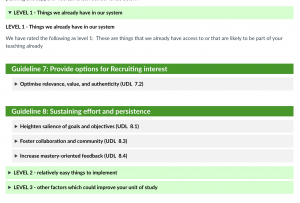
As Faculty Disability Liaison Officer for the FMH, Dr Andy Smidt is regularly involved in supporting academics to provide adjustments to learning material and assessments, whilst knowing that universal design would remove the use of some of these adjustments.
Feedback from FMH staff, however, was that the UDL diagram looked complex and created a barrier for staff when trying to implement UDL in their teaching.
To help combat this, we created the Canvas site around “3 levels of UDL” that related to available resources at the University of Sydney:
- Level 1 identifies things we already have or that teachers probably already do,
- Level 2 identifies things that are easily implemented with limited small changes to teaching, and
- Level 3 identifies things that will take more planning and support from Educational Innovation.
In the Canvas site, we then provided examples of each UDL guideline for each of the three levels following the CAST UDL guidelines site and the UDL on Campus site.
We also built a UDL self-assessment tool to help lecturers identify which concepts from UDL they are already doing. The outcome of the quiz directs users to relevant sections in the Canvas site, where they can explore additional tasks they may wish to implement.
Case study: applying UDL in REHB2026
To model the UDL practices shown in the UDL Canvas resource site, we used an existing Canvas site as a case study to illustrate the process of changing small things that would start the process of implementing UDL in everyday learning for all students.
REHB2026 is an elective unit in FMH that was completed entirely online due to COVID-19. This case study includes videos of Andy (in her role as the unit coordinator) and two of her students discussing the Canvas site for REBH2026 and two assessments that incorporated good UDL principles.
1. Provide multiple means of engagement
The first example of UDL in REHB2026 relates to choice and autonomy (UDL 7.1). Students were offered choice in the delivery style of the unit including 2-hour lectures on zoom, brief lectures alongside self-directed material or an entirely self-directed model. Students were offered the chance to consider the impact of each of these on their learning. They chose to meet weekly on zoom for a short session (30 mins) during which time the key concepts for the week were explained and they were provided with a tour of the Canvas material for that week and any questions they had were answered. Students commented that they valued being offered a choice. They felt respected as learners, and they liked that only two weeks of the semester required attendance.
The second UDL principle in this unit related to building a community of learners (UDL 8.3). This is particularly important and challenging, particularly during COVID where all teaching was online. In REHB2026, several assignment tasks involved peer feedback which was set up in a way that resulted in the students feeling supported. One student commented
“peers who are doing the exact same assignment …look at your work, really means that you understand what they are saying and you can implement it a bit better because they know what you are going through and they know the expectations”.
2. Provide multiple means of representation
Providing material in different ways for all students to be able to access and understand the content seems obvious for students with vision or hearing loss (UDL 1.2 and UDL 1.3). However, it is also relevant for all learners, as individuals may simply grasp information more quickly or efficiently through visual or auditory means than they do through printed text. In REHB2026, the material was offered through a range of sources including video recordings of mini-lectures, YouTube and other publicly available videos, and both formal and informal written text (UDL 3.4). Offering multiple formats allows students the opportunity to explore the content repeatedly which supports students to make connections with and between concepts and their background knowledge (UDL 3.1).
One of the key guidelines in UDL relates to providing options for language and symbols (UDL 2.1). In REHB2026, an activity early in the semester involved students watching Youtube videos about disability and creating group definitions of key vocabulary.
3. Provide multiple means of action and expression
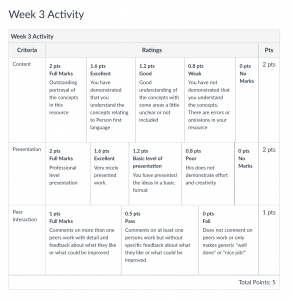
Providing multiple means of action and expression is vital for students with a disability to demonstrate their learning. Some academics feel that essay writing is an essential feature of university, however, it is important to determine whether or not the learning objective relates to writing in a formal academic style. If it does, then an essay is appropriate. If, however, that is not a learning objective, then it is appropriate to allow students to demonstrate learning in a range of different media (UDL 5.1). Assessments that are authentic, such as writing reports in the style that would be appropriate in the workplace, allow students to communicate their learning and maintains their motivation through the use of authentic activities (UDL 7.2).
In REHB2026, one of the key learning objectives was for students to become advocates for people with a disability. The final assignment involved students participating in a debate where they needed to effectively argue their side in a live debate in week 13. Students created short videos arguing their side of the debate which directly links to the learning objective of advocacy.
In REHB2026, the week 3 marked task involved students creating a resource about the concept of “person-first” language. Students were given the choice to create a resource of their choosing (flyer, poster, cartoon, video, PowerPoint) which they then shared in a discussion forum. Students were required to comment on the resources. Marks were given for content, presentation and peer interaction.
What did the students think?
Students reported gains in three specific areas that relate to UDL:
Students appreciate easy to navigate, organised Canvas sites
The students specifically mentioned the importance of having a Canvas site that was organised and easy to navigate (which they reported was a strength in REHB2026). They also liked that the lecturer would dedicate a few minutes at the start of each week showing the students how to find all the relevant learning resources for the week ahead.
“We were given a tour of canvas each week… I found this helpful as a first-year student who was somewhat new to Canvas because the activities varied from week to week and so it was really helpful to clarify what it was we needed to do” [Scarlett]
Students appreciate choice
Students stated their enjoyment in the activities and assessments that provided individual choice (UDL 7.1). For example, students enjoyed the creative freedom to express themselves in the week 3 marked activity in REHB2026. Whilst the students noted that it might take longer to complete (as opposed to a traditional essay task), they felt they learned more due to this choice granting them greater ownership, value, and creative autonomy (UDL 7.2)
“what I really enjoyed…. was the creative outlets that we were allowed to use throughout the whole semester” [Sophie]
Students appreciate a low weighted assessment task prior to a high weighted final assessment task – allows for feed-forward feedback
The students’ appreciated having a low weighted assessment task prior to their high weighted final assessment. In REBH2026, the final week 13 assignment was a debate activity; however, the students completed a low weighted version of this in week 7. The students appreciated the opportunity to practise and gather feed-forward feedback on the low stakes task that they could then apply to their high stakes assessment in Week 13 (UDL 8.4).
“I really think that being able to have some prep to the final assignment was key in helping me understanding what was required and settling my nerves” [Sophie]
Why is UDL important at the University of Sydney?
In his introduction to UDL, FMH’s Associate Dean (Education) Prof Inam Haq says that at The University of Sydney “we’re very lucky to have an extremely diverse cohort of students who learn and express themselves in many different ways. It’s so important therefore that we, as academics and educators, adapt our teaching, learning and assessment to match the way our students now learn.”
Students with a disability can register with Disability Services to create an academic plan that supports their learning and allows them to succeed. This is a costly and time-consuming process, and it involves students overcoming their fears about disclosing their own learning needs. Some of this could be negated if units of study are designed with UDL principles in mind which would result in fewer students needing adjustments, all students being able to succeed in their learning and reduce the amount of time taken to create, administer and process academic plans.
Importantly, implementing UDL will not be difficult for many staff. Many of the UDL principles are commonly used principles such as engaging students in their learning, delivering choice, promoting collaboration, providing authentic/relevant assessments, and the importance of timely feedback.
As Educational Designer, Toni says “Working on this project has been inspirational because it has allowed me to reflect on the educational designs that I’ve already implemented, with room to reflect and contemplate how these could be further developed (or re-developed) to encompass UDL guidelines. I am confident that others will feel equally motivated once exposed to these simple and effective ideas.”
If we return to where we started this article and think about buildings, imagine a world where there were no lifts or escalators. In this world, disability rights are valued and there is a recommendation that all people with or without a disability should have equal access to the services including those on a high storey of a multi-storey building. In this world, we might need to employ people to manually carry people up flights of stairs which would be costly, time-consuming and stigmatising. Universal Design would then probably recommend that all new buildings should be built with lifts or escalators. We can view education through a similar lens. We can remove some of the barriers and inconvenience posed by allowing students to apply for “special treatment” in the academic process by building accessible material from the outset and remove the costs, time, and stigma of offering adjustments for students with a disability.
You can explore the FMH UDL Canvas resource site and register for our four online UDL workshops in October 2021:


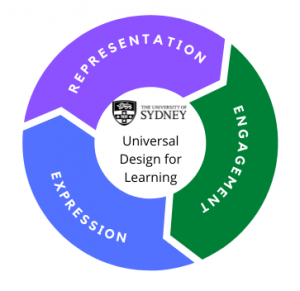
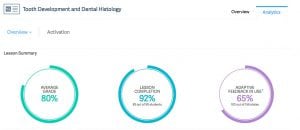

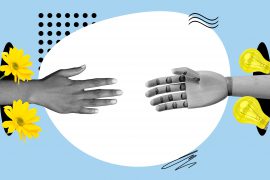

3 Comments